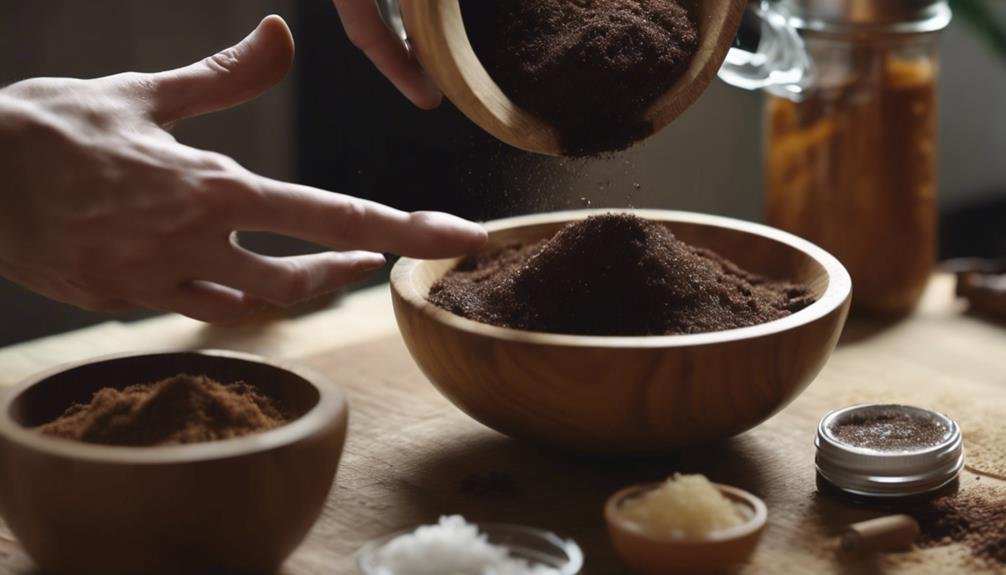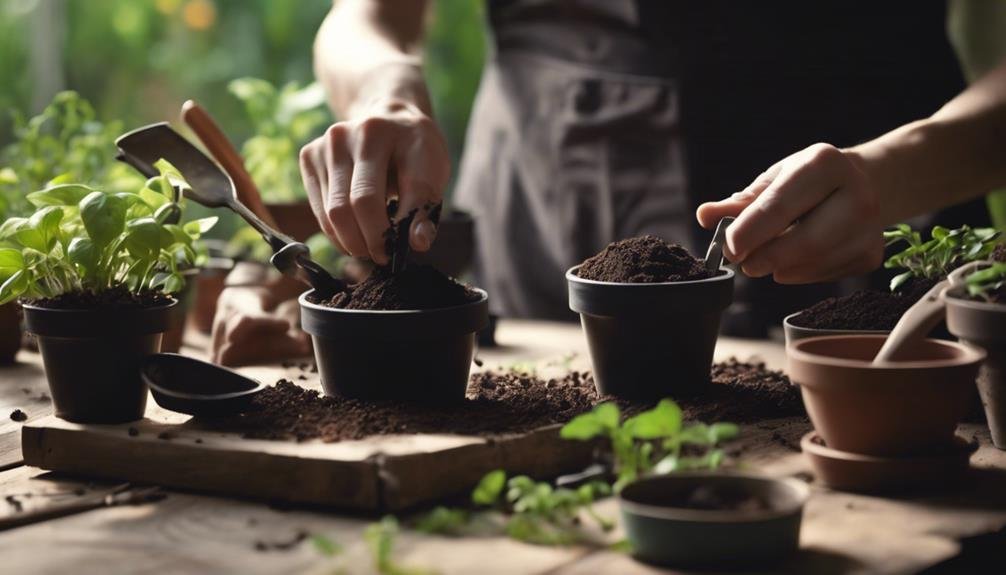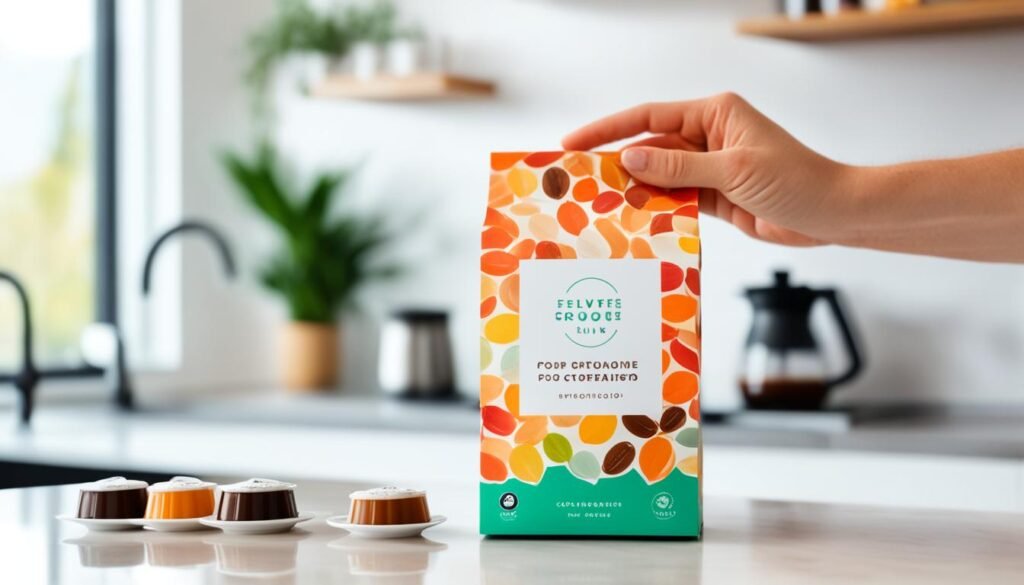Coffee grounds can be repurposed in various eco-friendly ways after brewing. In your garden, they can boost soil health and benefit acidic soil-loving plants. For personal care, mix grounds with coconut oil and sugar to create an exfoliating body scrub. You can also combine them with olive oil to make a natural furniture polish, giving wooden surfaces a beautiful shine. Additionally, coffee grounds can be used in creative DIY projects, such as making aromatic candles or natural air fresheners. These alternatives not only reduce waste but also add value to your home and lifestyle. Explore further to discover more innovative uses for your used coffee grounds.
Understanding Coffee Ground Reuse
As a coffee lover, you might be tempted to reuse your coffee grounds, but it's important to understand why this isn't the best idea for brewing. When you first brew coffee, the flavor extraction process removes most of the desirable compounds from the grounds. Reusing these grounds results in over-extraction, leading to a bitter, unpleasant taste.
Additionally, letting the grounds dry out causes under-extraction, producing weak and flavorless coffee.
While reusing grounds for brewing isn't recommended, there are other ways to embrace sustainability and reduce environmental impact. Consider composting your used coffee grounds, which can enrich soil and benefit your garden. This practice not only reduces waste but also contributes to a more eco-friendly lifestyle.
Gardening Benefits
Many gardeners swear by coffee grounds as a secret weapon for boosting soil health and plant growth. If you're looking to enhance your garden's productivity, consider incorporating used coffee grounds into your soil. These grounds can benefit acidic soil-loving plants and improve overall plant growth. Here's a quick guide to using coffee grounds in your garden:
| Plant Type | Benefit | Application Method | Frequency | Precautions |
|---|---|---|---|---|
| Tomatoes | Nutrient boost | Mix with soil | Monthly | Avoid excess |
| Magnolias | pH adjustment | Sprinkle around base | Quarterly | Monitor soil pH |
| Roses | Pest repellent | Top dress soil | Bi-monthly | Watch for mold |
| Blueberries | Acidity increase | Incorporate in mulch | Annually | Don't overuse |
| Carrots | Soil aeration | Mix into compost | As needed | Avoid direct contact |
Homemade Coffee Scrub

While coffee grounds can work wonders in your garden, they're also a fantastic ingredient for homemade beauty products, particularly exfoliating scrubs. The coarse texture of used coffee grounds makes them ideal for DIY recipes that focus on exfoliating benefits.
To create your own coffee scrub, mix medium to fine ground coffee with coconut oil, vanilla, and sugar. This combination not only helps remove dead skin cells but also improves overall skin health and vibrancy.
When using coffee grounds in your skincare routine, it's important to avoid coarsely ground coffee, as it may be too harsh on your skin. Instead, opt for finer grounds that provide gentle exfoliation.
Natural Furniture Polish
Coffee grounds' versatility extends beyond the kitchen and garden, offering an eco-friendly solution for polishing your wooden furniture. This DIY cleaning method combines used coffee grounds with olive oil to create a natural furniture polish. The mixture not only gives your wood surfaces a beautiful shine but also contributes to wood preservation.
To make this polish, simply mix equal parts coffee grounds and olive oil to form a paste.
When applying the polish, use a soft cloth to gently rub it onto the wooden surface in circular motions. After letting it sit for a few minutes, wipe off the excess with a clean cloth.
While this method can be effective, it's important to note that it's not recommended for homes with pets. The coffee scent may attract animals, potentially leading to unwanted behavior. Always clean thoroughly after use to avoid any residual attraction.
Creative Repurposing Ideas

Beyond the garden and furniture polish, you'll find a wealth of innovative ways to repurpose your used coffee grounds. Consider incorporating them into your kitchen crafts and DIY projects for eco-friendly solutions.
You can create aromatic candles by mixing grounds with melted wax, or craft natural air fresheners by placing dried grounds in small fabric pouches. These sustainability initiatives not only reduce waste but also add a touch of creativity to your home.
In the kitchen, you can use coffee grounds as a natural abrasive for cleaning tough stains on pots and pans. They're also effective in absorbing odors in your refrigerator or garbage disposal.
For DIY enthusiasts, coffee grounds can be mixed with clay to create unique textures in pottery projects. By exploring these creative repurposing ideas, you're contributing to a more sustainable lifestyle while finding practical uses for what might otherwise be discarded.
Conclusion
You've now discovered the hidden potential of your used coffee grounds. From nourishing your garden to pampering your skin, these versatile leftovers can breathe new life into various aspects of your daily routine.
By repurposing your grounds, you're not only reducing waste but also maximizing the value of your coffee purchase. So the next time you brew a cup, remember that those grounds aren't just dregs to be discarded—they're a goldmine of possibilities waiting to be explored.












